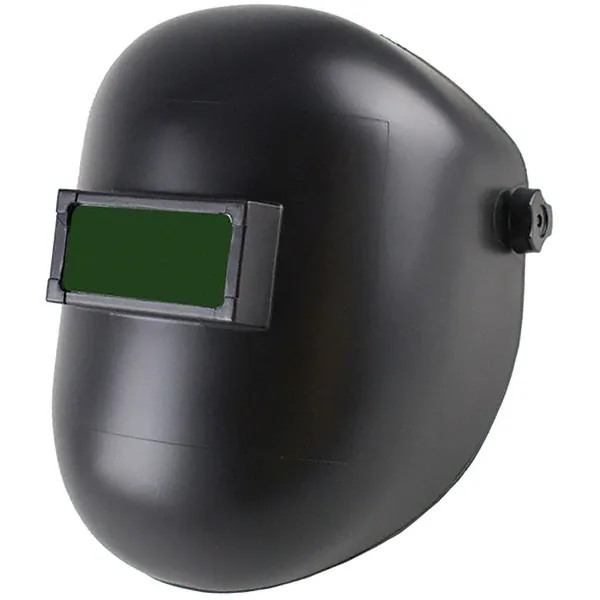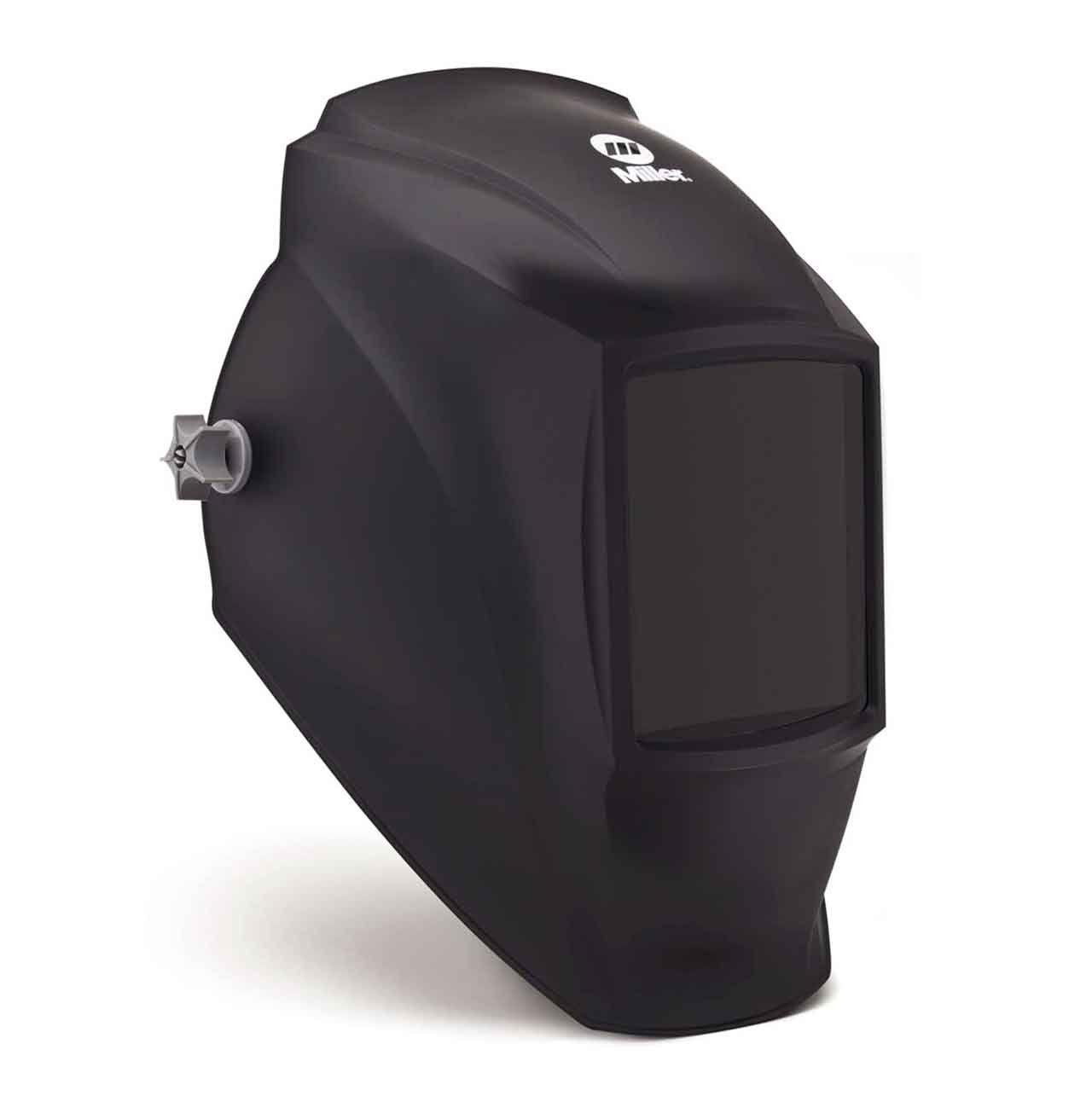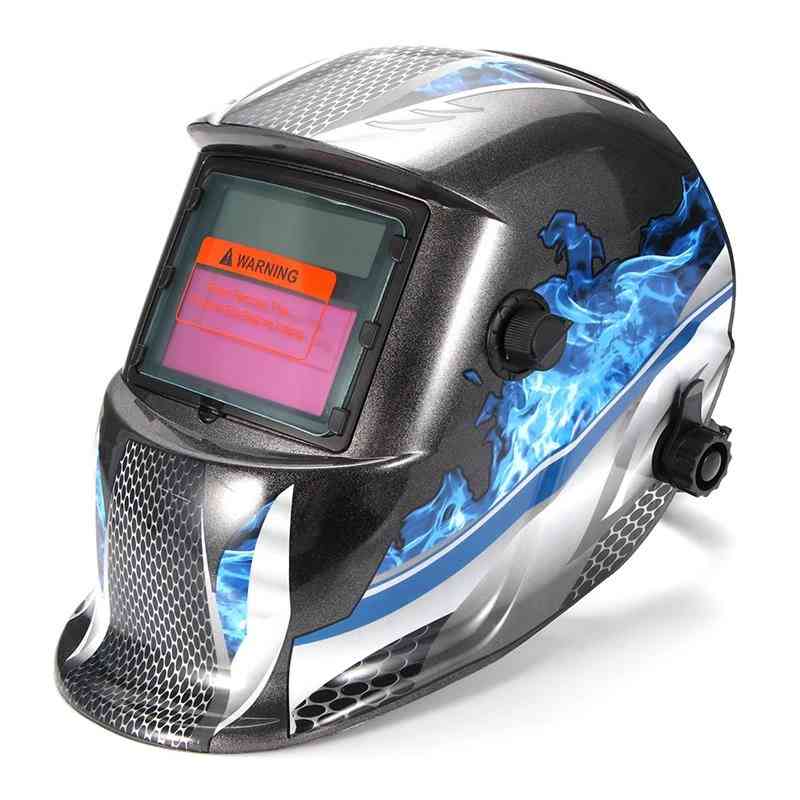During the welding process, the light intensity emitted by the arc may vary. Depending on the used material, the light can be more or less intense. So, using the same lens all the time isn’t the wisest decision.
Fortunately, there are many welding helmet types that can automatically vary the shade of the lens. That way, the user doesn’t need to change the lens over and over again. Today, we’ll show you the most interesting features of 7 different types of welding helmets.
7 Different Types Of Welding Helmets
Fixed-shade lens welding helmet

These models come with a single lens fixed to the helmet. So, the user can’t change the lens depending on the light intensity. The standard shade is 10 or 12.
Fixed-shade lens welding helmet are very durable and made with resistant materials. They’re ideal for very specific welding tasks. For example, those where the welding amperage and the material is always the same.
Variable-shade lens welding helmet

These helmets also come with a single fixed lens. However, in this case the lens adjusts its shade depending on the received light intensity. For this reason, variable-shade lens welding helmets are much more versatile. They adapt to a wide variety of different welding techniques and materials. These welding helmets are ideal for professional welders.
Passive welding helmets

Passive welding helmets are the safest of all. Their structure is solid; to protect the welder’s face. Passive welding helmets also come with a single fixed lens. Usually, a shade 10 or 12.
In addition, they’re the cheapest of all. So, they’re the best option for users with a small budget. However, the user needs to take off the helmet to have a clear vision and inspect the welded piece. This implies a considerable waste of time.
Auto-darkening welding helmets

These types of helmets use sensors to detect the light intensity emitted by the arc. The brighter the light, the darker the lens becomes. Even if there’s no welding arc, the lens maintains a shade 3 or 4.
This configuration guarantees a clear vision and it’s safe enough to keep eyes protected. These helmets are very practical, because the user doesn’t need to change the lens when working with different materials. That way, the welder saves time and becomes more efficient.
However, auto-darkening welding helmets aren’t cheap. You’ll need at least $100 dollars to buy one. So, they aren’t the best alternative for low-budget users.
Battery-powered helmet

These models automatically vary the shade of the lens. To do so, they use rechargeable lithium batteries. They’re very convenient, because the batteries can remain charged for a long time. In addition, the user can quickly replace the battery to continue working.
After each use, it’s recommended to remove the batteries and recharge them. If the batteries remain in the helmet, they may discharge.
Solar-powered lens helmet

On the other hand, solar-powered lens helmets use a small solar panel to operate. They’re ideal for outdoor jobs, under direct exposure to sunrays. Unfortunately, they tend to lose their charge very quickly. So, if there’s no sun, they’re useless.
Also, as they need sun exposure to work, they tend to get too hot. So, they may be uncomfortable sometimes.
Solar & battery powered welding helmets

Certainly, these types of helmets are great for both Tig and Mig welders. In these cases, rechargeable lithium batteries are powered by a solar panel. So, the helmet keeps working even if there’s no sunlight. Unfortunately, the helmet needs to be exposed to the sun for a long time to fully charge the batteries.
However, you can also remove the batteries and use a charger to fully-charge them quickly.
Conclusion
As you can see, there are 7 different types of welding helmets that can be useful in different circumstances. So, before making any decision, you should consider some important factors. For example, type of welding material, job site conditions and available budget.
If you follow this simple tip, you’ll certainly be able to choose the best welding helmet for you.
FAQs
Q. What shade number should I choose for the lens?
A. It all depends on the light emitted by the welding arc. If the material needs a higher amperage to weld, the light will be more intense. So, you’ll need a higher shade number. 10-13 shades are the most common for arc welding.
Q. What is the main purpose of a welding helmet?
A. The main purpose of a welding helmet is to prevent eye damage caused by arc light. Also, they protect the face from welding gases and debris.
Q. Are welding helmets bad for your eyes?
A. No. In fact, the most common cause of eye injuries is choosing the wrong type of lens or not using a welding helmet.
Q. Can welding helmets block UV rays?
A. Yes. Welding helmets have a special filter that can reflect 99.99% of UV and IR radiations.








